4-Day Rome Itinerary | The Ultimate 2023 Guide

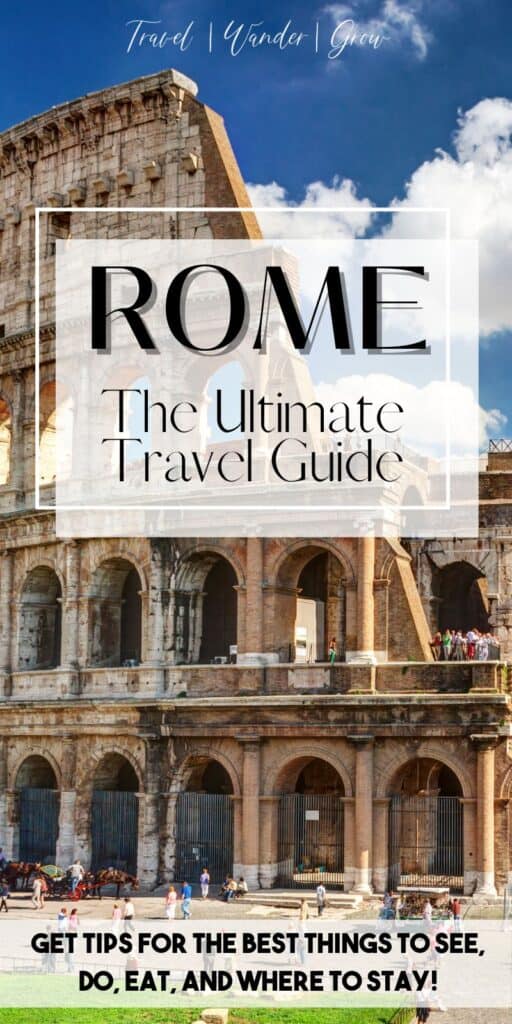
Rome or the “Eternal City” is a city that needs little introduction. As the capital of Italy and once the center of the Roman Empire, it is a city steeped in history, culture, and architecture. The city is famous for its ancient ruins, beautiful piazzas, vibrant street life, and delicious cuisine. A visit to Rome can feel like a trip back in time, with its iconic landmarks such as the Colosseum, the Pantheon, and the Roman Forum providing glimpses into the city’s ancient past. Yet, Rome is also a modern and dynamic city, offering a unique blend of the old and the new. From the city’s enchanting narrow streets, beautiful Piazzas, and ancient ruins, you would have a hard time finding a more charming city. After several trips to Rome, I’ve narrowed down my list of the things and places you must see and do there. This post will cover all of this and additional city tips in a 4-day Rome Itinerary. I love, love Rome and can’t stop going back – in fact, it’s my most visited city outside the US! I hope that you fall in love with the city as much as I have when you visit.
A Brief City History | Rome
Rome was founded in the 8th century BC, most likely due to the gradual aggregation of villages situated above Palatine Hill. However, the story goes that city was founded by the twin brothers, Romulus and Remus. According to legend, the brothers were abandoned at birth and raised by a she-wolf, who nurtured and protected them until they were old enough to found their own city. The brothers eventually had a dispute over the location of the city, and Romulus killed Remus and became the first king of Rome. This story is still celebrated in Rome today with an annual festival known as the Lupercalia.
During the ancient times Rome moved from a monarchy, ruled by kings; a republic, governed by the Senate; and an empire, ruled by…emperors. The Roman Republic was characterized by a complex system of government, with elected officials and a Senate. The republic lasted for almost five centuries until Julius Caesar rose to power and became dictator in 44 BC. Caesar’s assassination the following year led to a power struggle, and Rome became an empire under Caesar’s adopted son, Octavian, who took the name Augustus.
The Roman Empire was a powerful and influential force in the ancient world, with its territory stretching across much of Europe, the Middle East, and North Africa. Under the empire, Rome flourished economically and culturally, with impressive engineering feats such as aqueducts, roads, and public buildings.
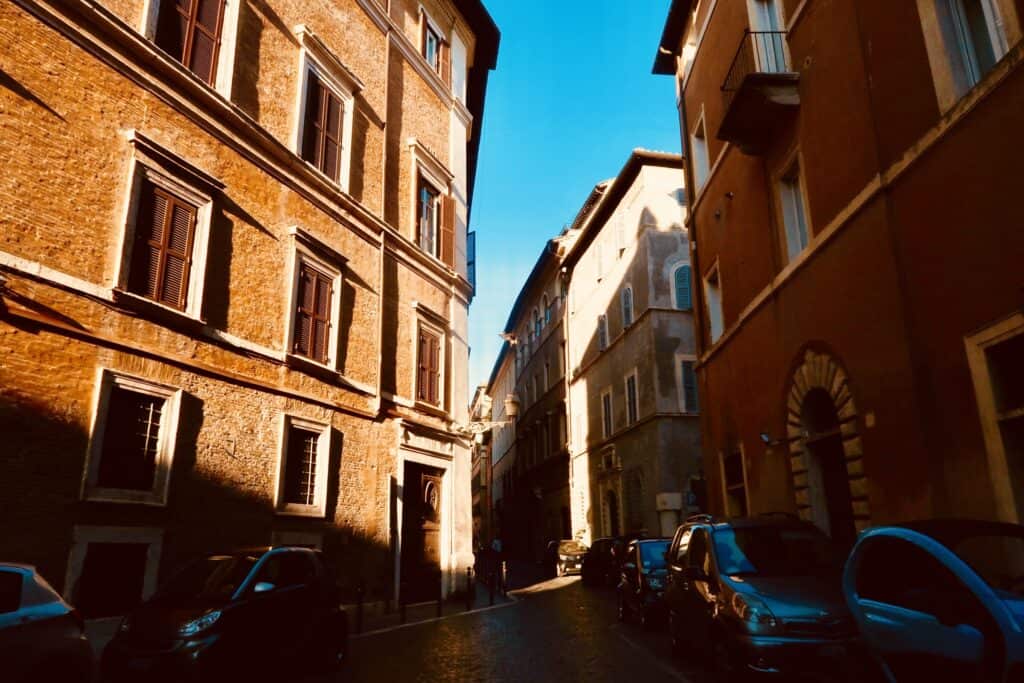
The empire’s military prowess allowed it to conquer and control much of the known world. At its peak, it spanned from as far west as Spain to as far east as Babylon (in present day Iraq). However, Rome’s power and influence eventually declined, with a series of military defeats, economic struggles, and political turmoil leading to the empire’s collapse in 476 AD. Following this period, Rome fell into a period of decline for many years.
Fast forward to the late middle ages, Rome reaped many of the benefits of the Age of Enlightenment. It became a center for thought and beautiful architectural design. Despite its eventual decline, Rome’s legacy continues to influence modern civilization through its language, culture, and architecture. Today, Rome is a bustling city of more than 2.8 million people. It has a wonderful mix of the ancient, the old, and the new, which is why I love it so much. It is the third most popular destination in the EU, after London and Paris, visited by over 7 million tourists each year!
The 4-Day Rome Itinerary
Day 1 | Getting to Know Rome
Morning/Afternoon
On your first day in Rome, get up early and head over to the Spanish Steps, located above the Piazza di Spagna. I recommend getting there no later than 9:30AM so that you can enjoy the stairs without the crowds that linger here the majority of the day. The Spanish Steps are an iconic landmark in Rome that feature 135 steps that lead up to the Trinità Dei Montichurch at the top. The steps were built in the early 18th century and are known for their beautiful Baroque style.
Fun Fact: Despite the name, these steps were originally funded by French Diplomat Etienne Gueffier.
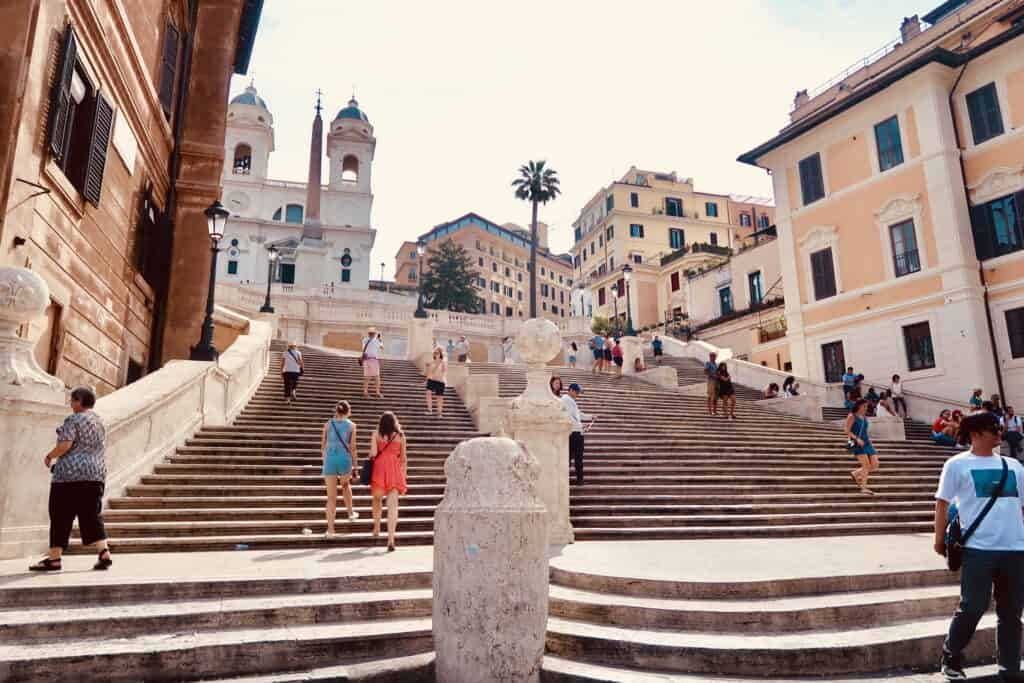
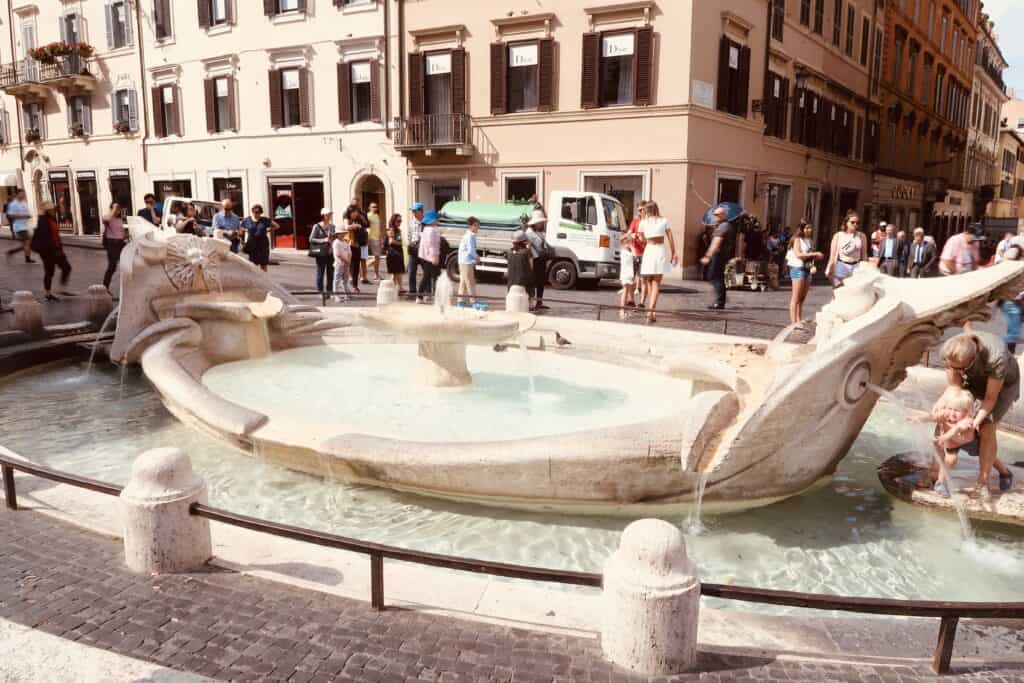
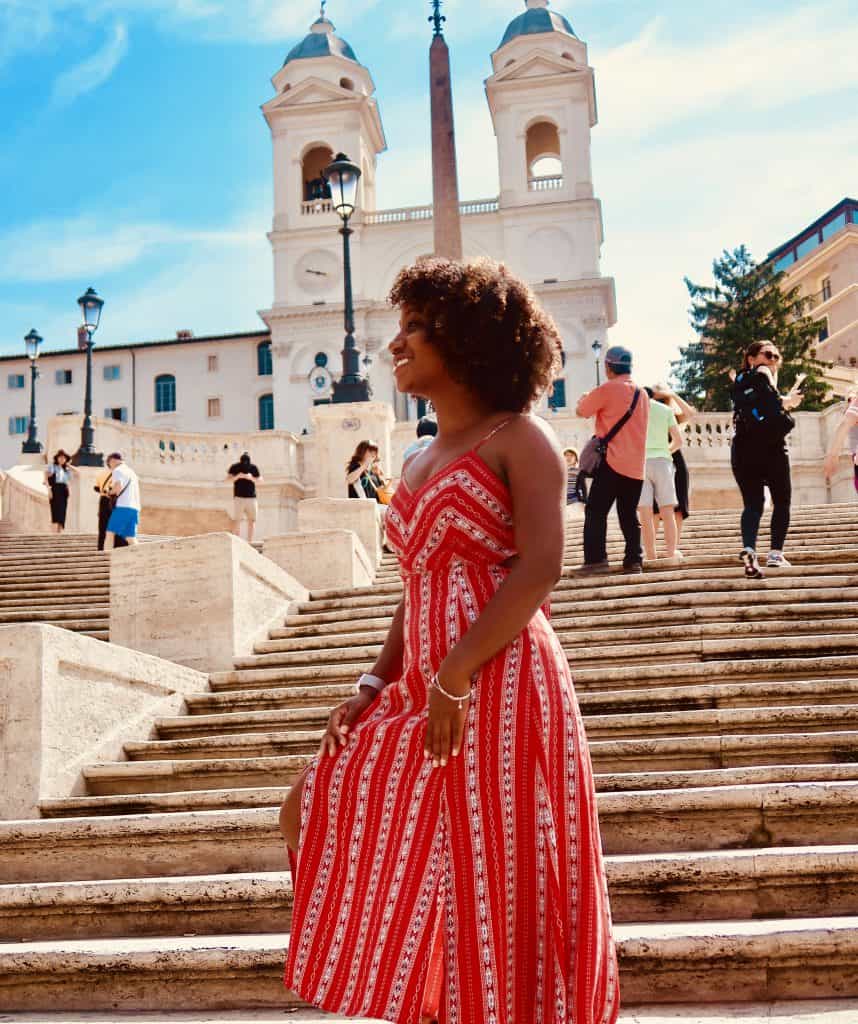
The Barcaccia Fountain at the base of the steps, designed by Gian Lorenzo Bernini and his son, is also a popular attraction.
If you are using the metro, you can access the stairs from the Spanga station. If you are in need of a bite to eat, you can find several spots to grab something nearby.
Pro Tip: When in Rome, never eat on the same main street as the tourist attractions. Head to a side street where you’ll find better prices and more authentic cuisine.
After you finish your visit at the Spanish Steps, head over to the Monumento A Vittorio Emanuele II to begin your guided tour of the city. I recommend taking the Best of Rome Walking Tour. This walking tour will cover some of the city’s most popular destinations:
Monumento a Vittorio Emanuele II, also known as Altare della Patria, is an iconic monument in Rome that celebrates the unification of Italy and the role of Victor Emmanuel II in this process. This impressive structure, with its distinctive white marble façade and grandiose design, is one of the largest monuments in the city, standing at 70 meters tall. It houses the Museum of Italian Unification, which provides visitors with a fascinating insight into Italy’s history and culture. The monument is also home to the Tomb of the Unknown Soldier, which serves as a reminder of the sacrifices made by Italian soldiers in the line of duty. While the monument has been a subject of controversy, it remains a popular tourist attraction and an important symbol of Italian unity and patriotism.
Trevi Fountain is a world-famous landmark located in the heart of the city. The fountain was completed in 1762 and is considered one of the most beautiful Baroque fountains in the world. It features a large central statue of the sea god Oceanus, flanked by two Tritons. The fountain is also adorned with intricate carvings and sculptures that depict scenes from Roman mythology.
According to tradition, tossing a coin into the fountain ensures that the thrower will return to Rome. As a result, the fountain is constantly crowded with visitors tossing coins into its waters. (It’s another place you may want to visit early). I do always make a point to throw a coin in at every visit, because, who doesn’t want to go back to Rome?
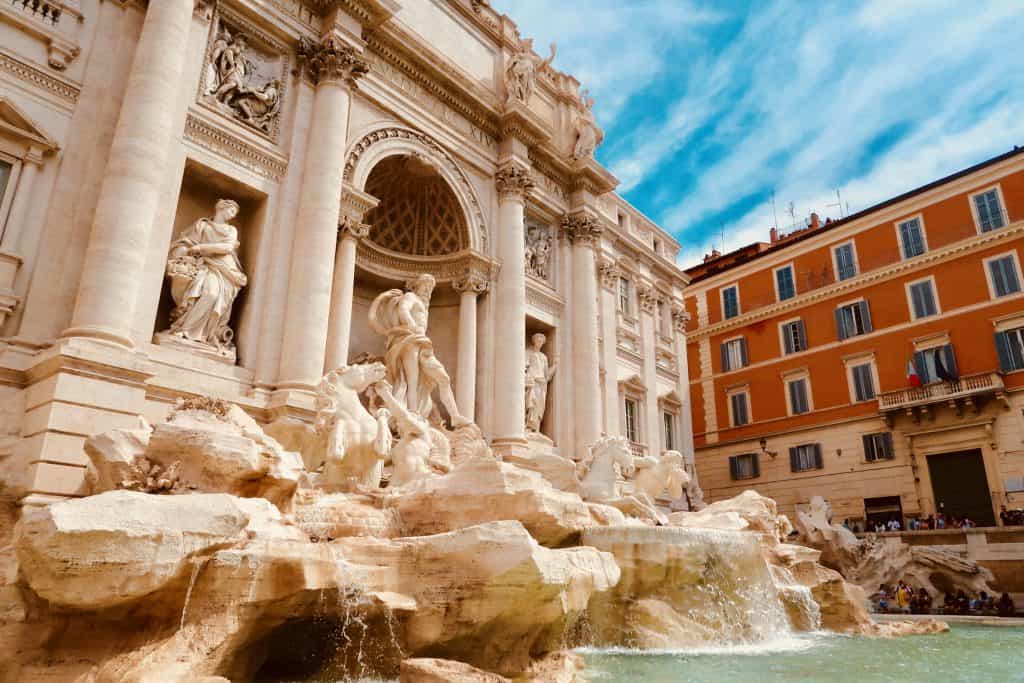
The Pantheon is a magnificent ancient temple that was originally built as a temple to all the gods in 27 BC. It was later converted into a Christian church in the 7th century. The Pantheon is known for its stunning architecture, particularly its large dome, which is made of concrete and is one of the largest unsupported domes in the world. The dome features an oculus, or circular opening, that allows sunlight to stream into the temple, creating a magical effect.
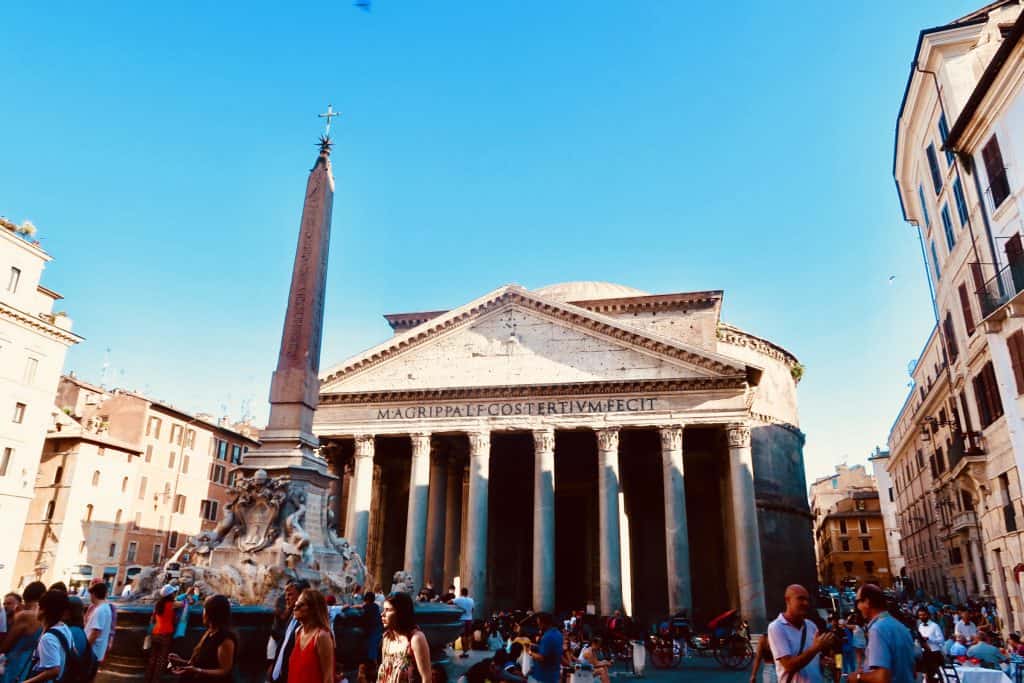
The interior of the Pantheon is equally impressive, with intricate marble floors and walls, and numerous sculptures and works of art. What is amazing about the Pantheon is that it is nearly 2000 years old, yet is still a fully functional building. I always make a stop here when I am in Rome.
Trajan’s Baths were one of the largest public bath complexes in ancient Rome, built by Emperor Trajan in the 2nd century AD. The baths were situated near the Roman Forum, and covered an area of over 30 acres. The complex was divided into two main sections, one for men and the other for women, and featured a variety of amenities, including hot and cold pools, saunas, and exercise rooms. The baths were also adorned with beautiful works of art, including mosaics and sculptures. Today, little remains of Trajan’s Baths, but visitors can still see some of the ruins, including the impressive remains of the brick vaulting that supported the complex’s floors.
Piazza Navona is a magnificent square located in the historic center of Rome, Italy. Originally built in the 1st century AD as a stadium for athletic contests, it was later transformed into a public square in the 17th century. Piazza Navona is famous for its stunning Baroque architecture, including the famous Fountain of the Four Rivers, designed by Gian Lorenzo Bernini, and the Church of Sant’Agnese in Agone, which features a breathtaking façade designed by Francesco Borromini. The square is also home to a number of street performers and artists, who add to the lively atmosphere of the area. Today, you’ll find that Piazza Navona is a popular tourist destination and a hub of activity in Rome, with numerous restaurants, cafes, and shops lining its streets.
Book Your Best of Rome Walking Tour Now!
Once the tour ends, stay close to Piazza Navona for a late lunch / early dinner. We ate at La Cantina Romana on a side street off the piazza and loved it. I especially recommend the Cacio e Pepe. After you eat, you can tour the piazza which was built over the ruins of the Stadium of Domitian. You can even take an underground tour to see these ruins, if you are up for it!
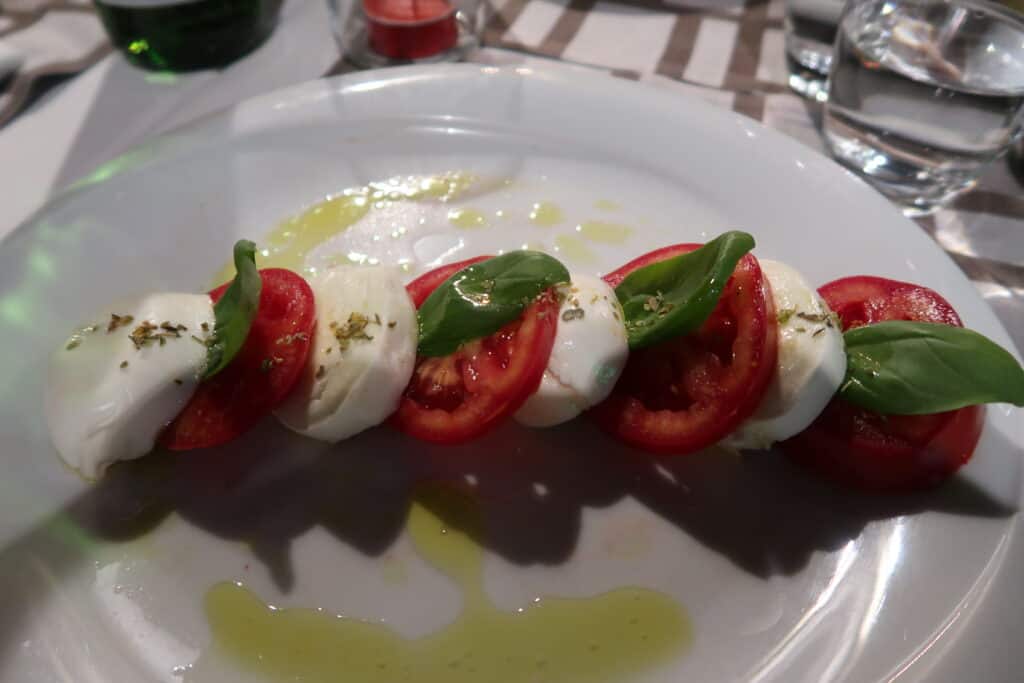
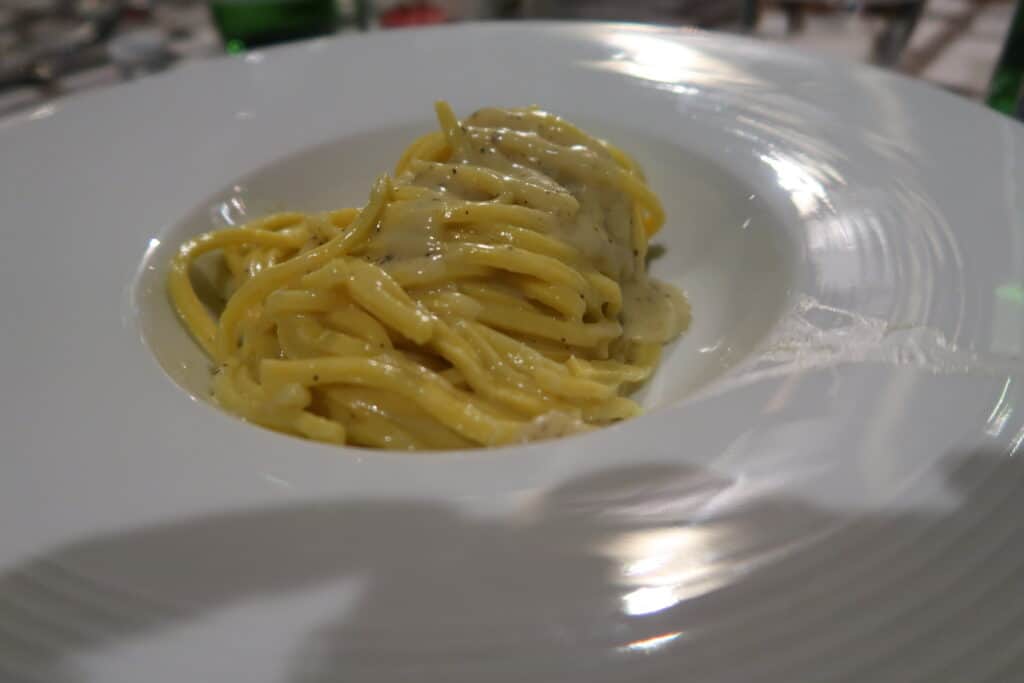
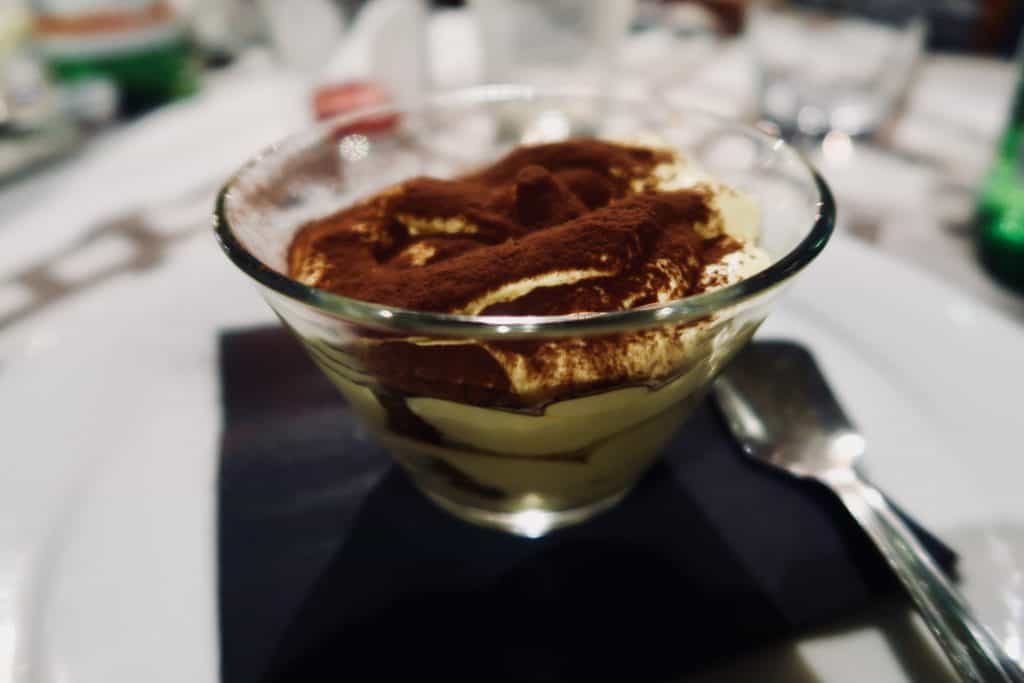
Evening
Head over to Piazza del Popolo, or People’s Square to spend a slow evening. This square was originally built in the early 19th century as part of an urban renewal project aimed at modernizing the city. Piazza del Popolo is famous for its beautiful Baroque architecture, including the twin churches of Santa Maria dei Miracoli and Santa Maria in Montesanto, which flank the entrance to the square. The centerpiece of the square is the towering Egyptian obelisk, which was brought to Rome from Heliopolis in ancient Egypt in the 1st century AD.
The square is also surrounded by a number of shops, cafes, and restaurants, making it a popular destination for both tourists and locals. Today, Piazza del Popolo is a bustling hub of activity in Rome, and is often used for concerts, festivals, and other public events.
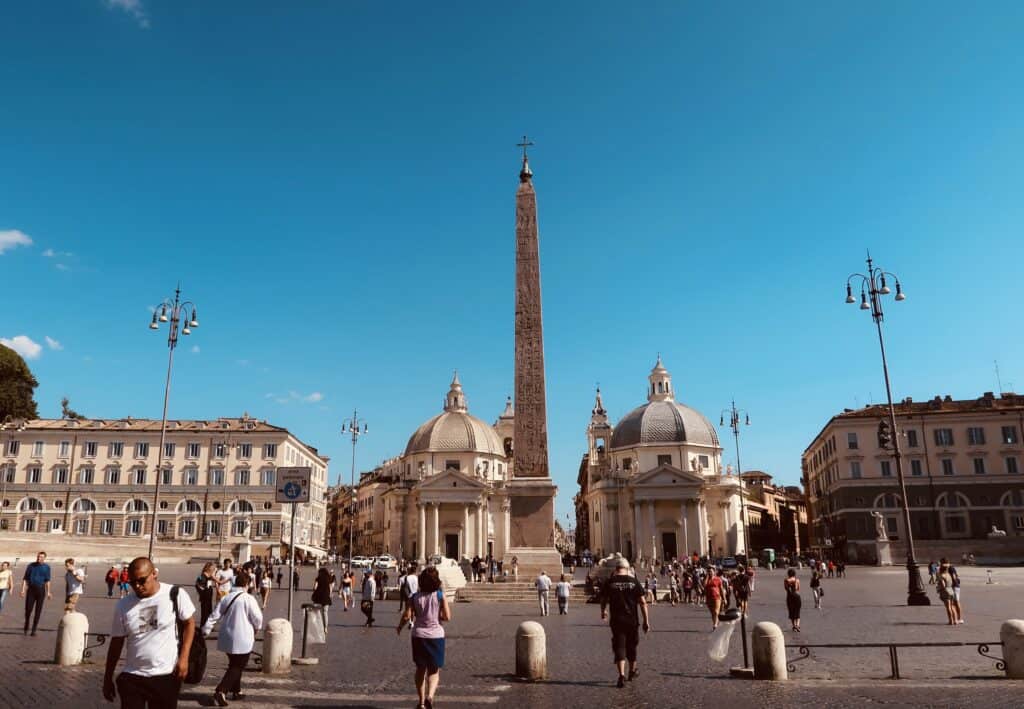
Day 2 | Ancient Roman City Center
Morning
Start your second day off right with some Italian coffee from a local cafe. Rome is FULL of wonderful cafes, so if you need a few recommendations check out this post on the best cafes in Rome for some ideas.
After getting your coffee fix, spend some time learning about the ancient history of the city. The ancient city center is located by the Colosseum, which is your first stop for the day. You can access this area of the city via the Colosseo metro station, if that is the method you are using for transport.
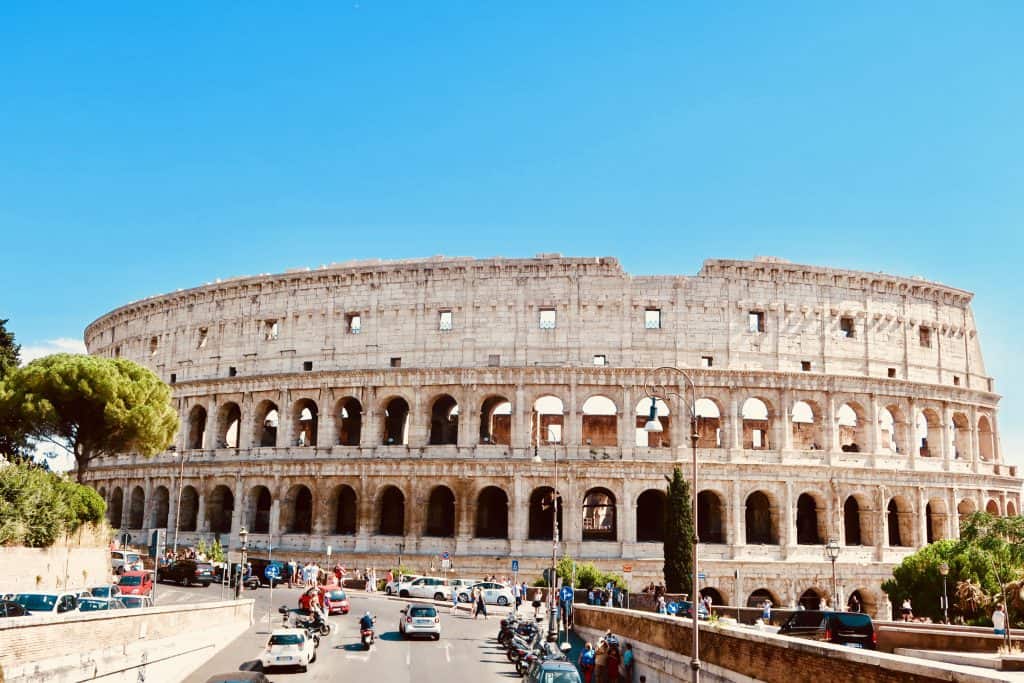
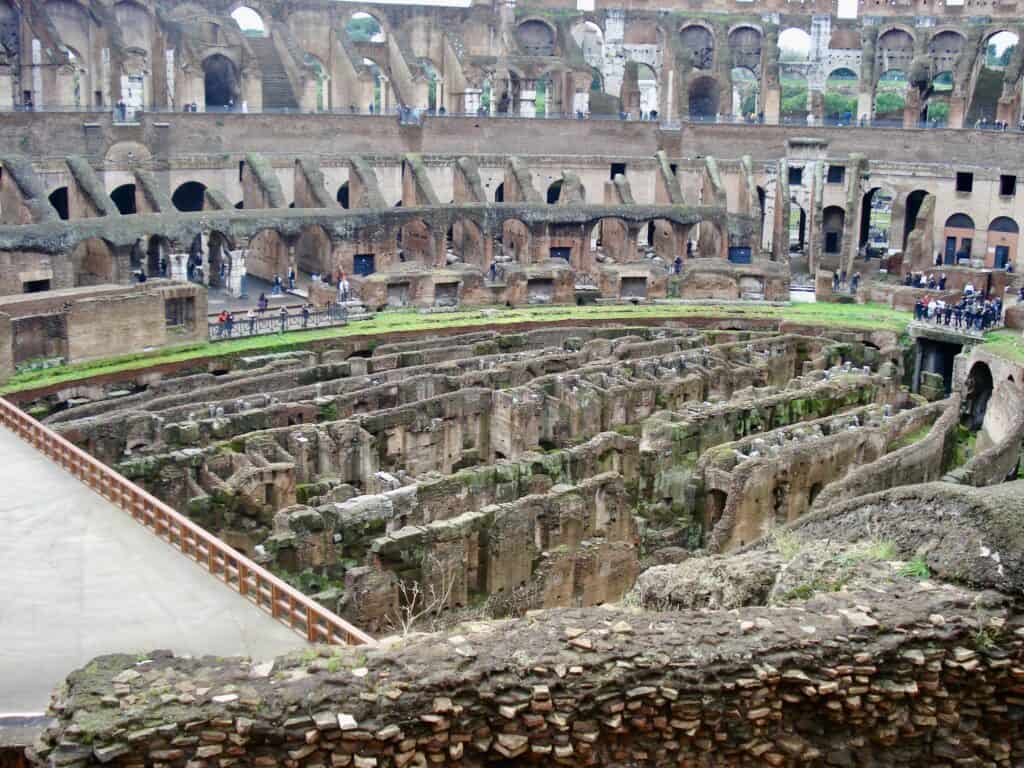
Also known as the Flavian Amphitheatre, the Colosseum is a massive ancient stadium located in the heart of Rome, Italy. Built nearly 2,000 years ago, the Colosseum was used for gladiatorial contests and other public spectacles, such as mock sea battles and animal hunts. The amphitheater was capable of holding up to 50,000 spectators, and was a testament to the engineering and architectural skills of ancient Rome. In fact, it was the largest stadium in existence for nearly 2000 years.
When visiting the Colosseum, you can explore the various levels of the stadium, admire its impressive architecture and design, and learn about the various events that took place there. In fact, you can also tour the underground of the Colosseum now. This is the area where the animals were caged, and where prisoners and gladiators were lifted to the stage via manual elevators. I did this on my last trip to Rome, and found it to be a really cool experience.
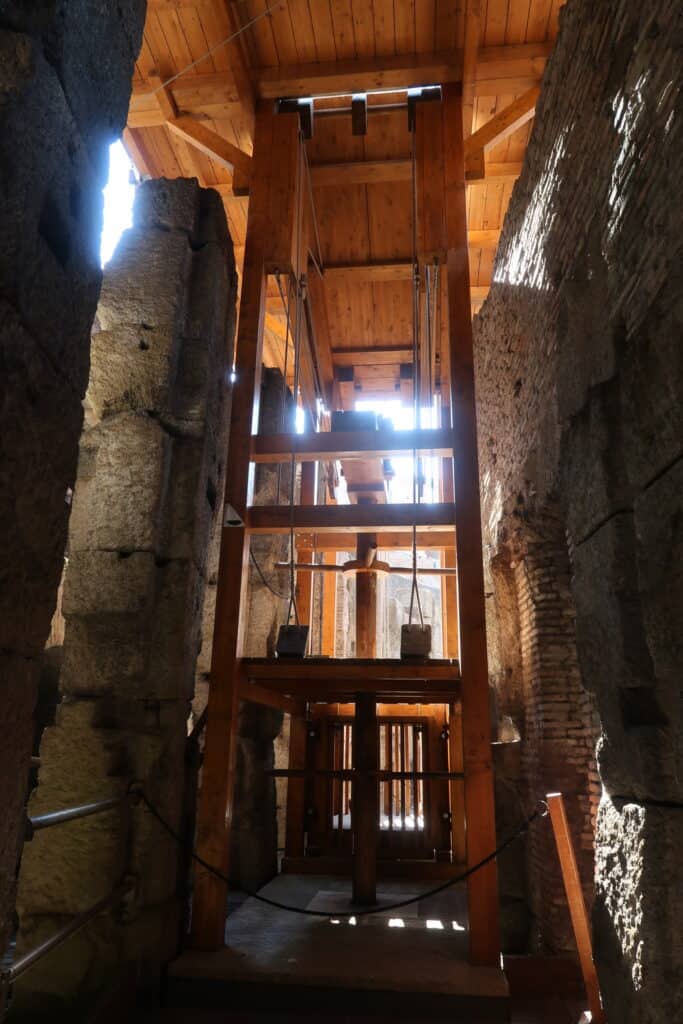
Across the street from the Colosseum is the Palatine Hill, which was the home to the rich and famous of ancient Rome. According to legend, it was on this hill where the founders of Rome, Romulus and Remus, were found and raised by a she-wolf. As the site of the earliest settlement of Rome, the hill played an important role in the city’s development and was later home to some of Rome’s most influential figures, including emperors and aristocrats. The hill is now an open-air museum, with a variety of ancient ruins and archaeological sites to explore. Visitors can walk along the tree-lined paths and explore the remains of the imperial palaces, the House of Augustus and House of Livia, as well as the Stadium of Domitian.
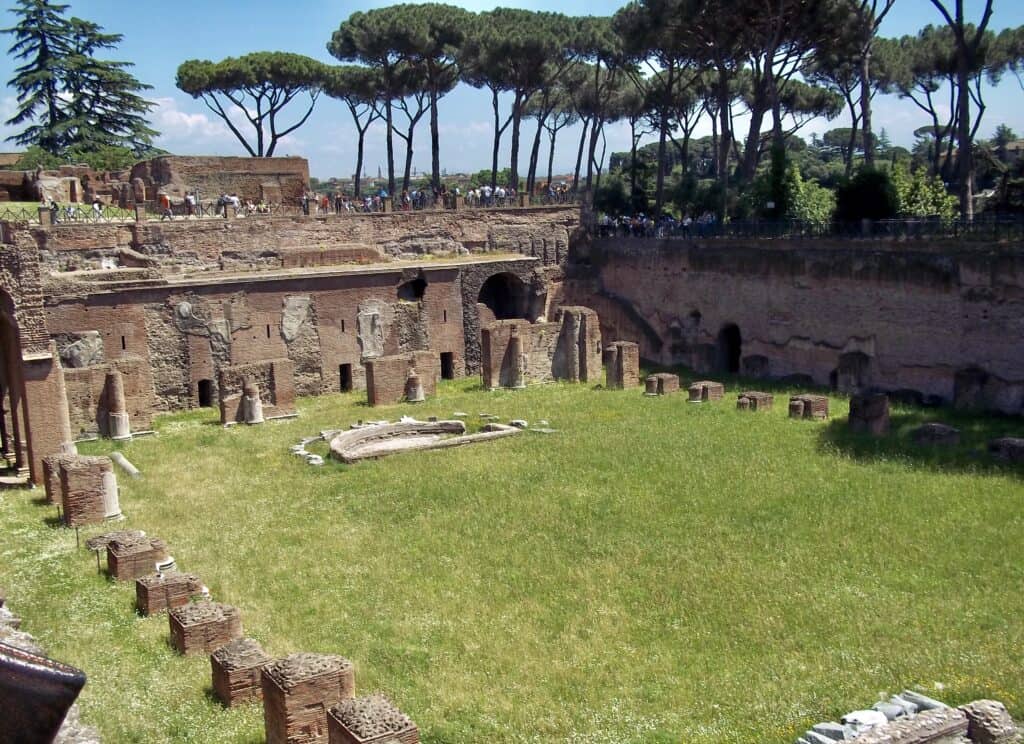
In addition to its historical significance, Palatine Hill isCi also a beautiful destination that offers stunning views of Rome’s other famous landmarks. From the top of the hill, visitors can enjoy sweeping views of the Roman Forum, the Colosseum, and the Circus Maximus. The hill’s gardens are also a beautiful place to relax and enjoy the scenery. You can find former residences of the likes of Nero and Caesar Augustus here.
On the opposite side of the hill you will find the Foro Romano or Ancient Roman Forum, one of my favorite places in Rome. Also known as the Forum Romanum, it is one of the most important archaeological sites in Rome. Located in the heart of the city, the Roman Forum was the political, economic, and social center of ancient Rome, and was the site of many important events in the city’s history.
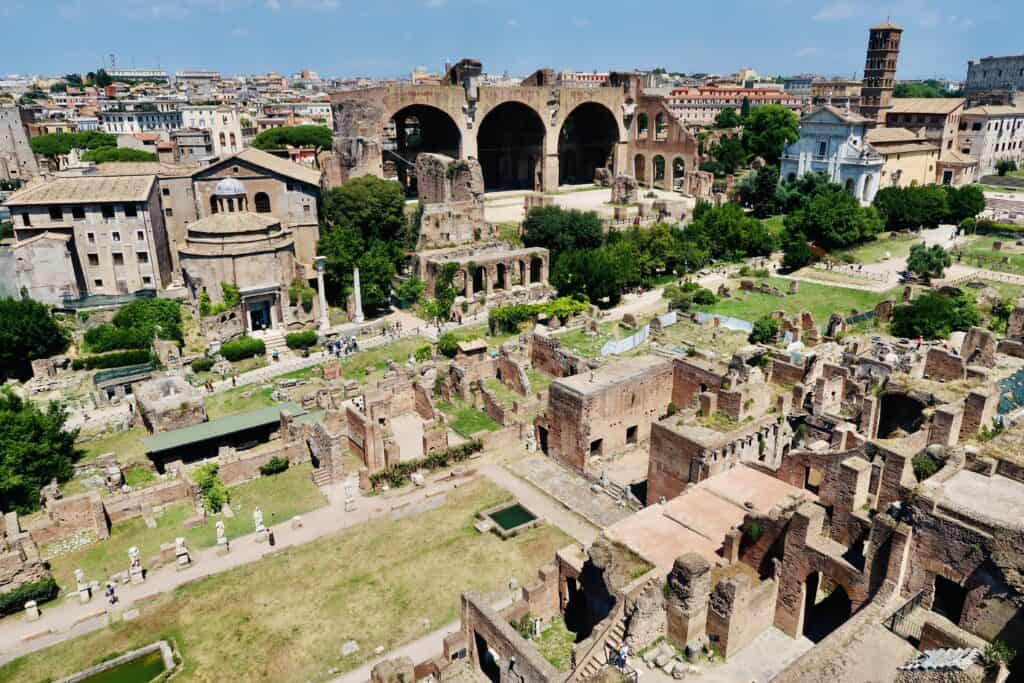
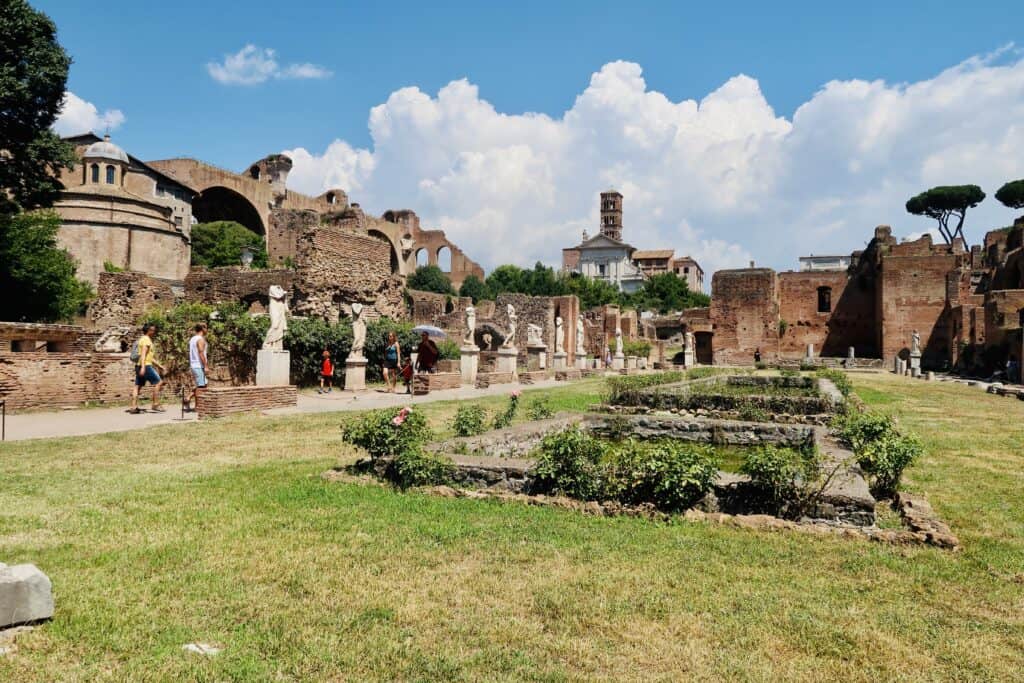
Here you can walk the same streets that the Romans did in the old center of the city. You can also explore the remains of numerous ancient structures, including the Temple of Saturn, the Arch of Titus, and the Basilica of Maxentius. The most famous landmark in the Roman Forum is the Temple of Julius Caesar, which was built on the site where the assassinated emperor was cremated in 44 BC.
Afternoon
Right behind the Palatine Hill are the ruins of the Circus Maximus, which is open certain days of the week for visitors. The Circus Maximus was an ancient Roman chariot racing stadium located in the valley between the Palatine and Aventine Hills. It was the largest and most important public entertainment venue in ancient Rome, capable of seating up to 250,000 spectators. The circus was primarily used for chariot racing, which was a popular sport in ancient Rome. The racing track was roughly 600 meters long and 200 meters wide, with a central barrier known as the spina that was adorned with statues, obelisks, and other decorative features.
Today, the Circus Maximus is an open-air archaeological site that offers a fascinating glimpse into ancient Rome’s cultural and social history. Although most of the circus’s original structure is now gone, visitors can still see the remains of the seating area, as well as some of the decorative elements of the spina. The site also offers sweeping views of the surrounding hills and the city of Rome.
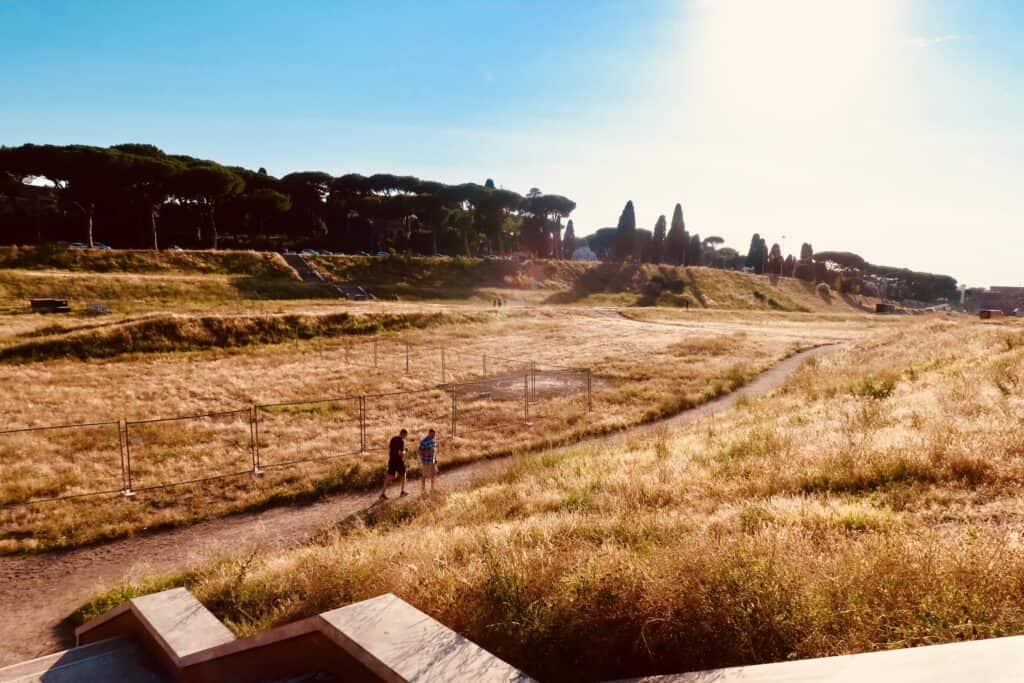
I highly recommend that you take a tour when visiting both the Colosseum and Palatine Hill as the context that a licensed tour guide can provide is invaluable. For me personally, having a tour guide help me better understand overall how life was in those times.
Also, if you are interested in going underground in the Colosseum, you have to attend with a tour guide to enter. I recommend the Ancient Rome Skip-The-Line Tour with Colosseum Underground. This tour included Palatine Hill, the Roman Forum, and the Colosseum. We had awesome local guides who made the tour a really entertaining learning experience.
Book your Ancient Rome Skip-The-Line Tour with Colosseum Underground tour now!
As this is the center of ancient Rome, you can find additional ruins surrounding the Colosseum and the Roman Forum. These include the Mercati Traianei, also known as Trajan’s Markets, is an ancient Roman complex of buildings located on the Via dei Fori Imperiali, near the Colosseum in Rome. The complex was built by Emperor Trajan in the early 2nd century AD and served as a multi-level shopping center for the people of ancient Rome. The complex consisted of a series of semi-circular structures that housed over 150 shops and offices, as well as warehouses and administrative buildings.
Today, the Mercati Traianei is an impressive archaeological site that offers visitors a fascinating look at life in ancient Rome. The complex has been partially restored, and visitors can explore the remains of the multi-level structures, as well as some of the shops and offices that once operated there. The site also contains a museum that showcases artifacts found during archaeological excavations, including pottery, coins, and other everyday items.
The Colle Oppio is also nearby, where you’ll find ruins like the Baths of Trajan.
Evening
Now this is perhaps a little bit of a non-traditional move, but after you finish exploring the ruins to your heart’s desire, take the metro to the Termini station for dinner. The first floor (above the platform) of the station has a lot of eating options, but for excellent homemade pasta, eat at Bottega Portici. I can only speak for the Torteloni, but it was so delicious that I ordered seconds.
Day 3 | Vatican City
Morning
On your third day in Rome, head to Vatican City. First up is the Vatican Museums! The Vatican Museums are among the most important and impressive art collections in the world. Located in Vatican City, the museums contain over 70,000 works of art, ranging from ancient Roman sculptures to Renaissance masterpieces.
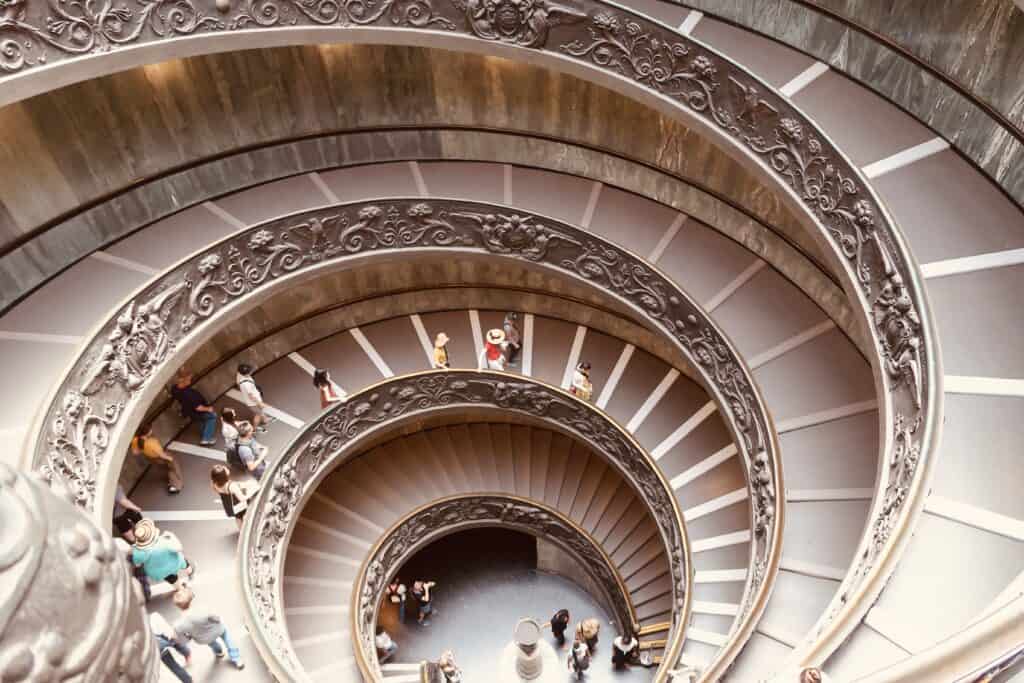
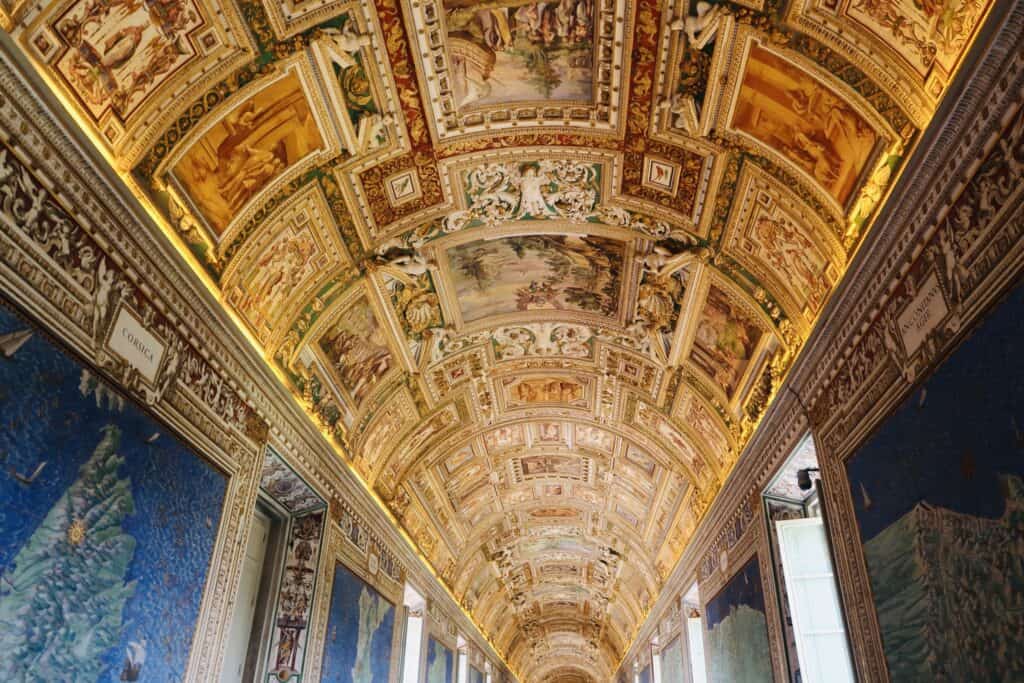
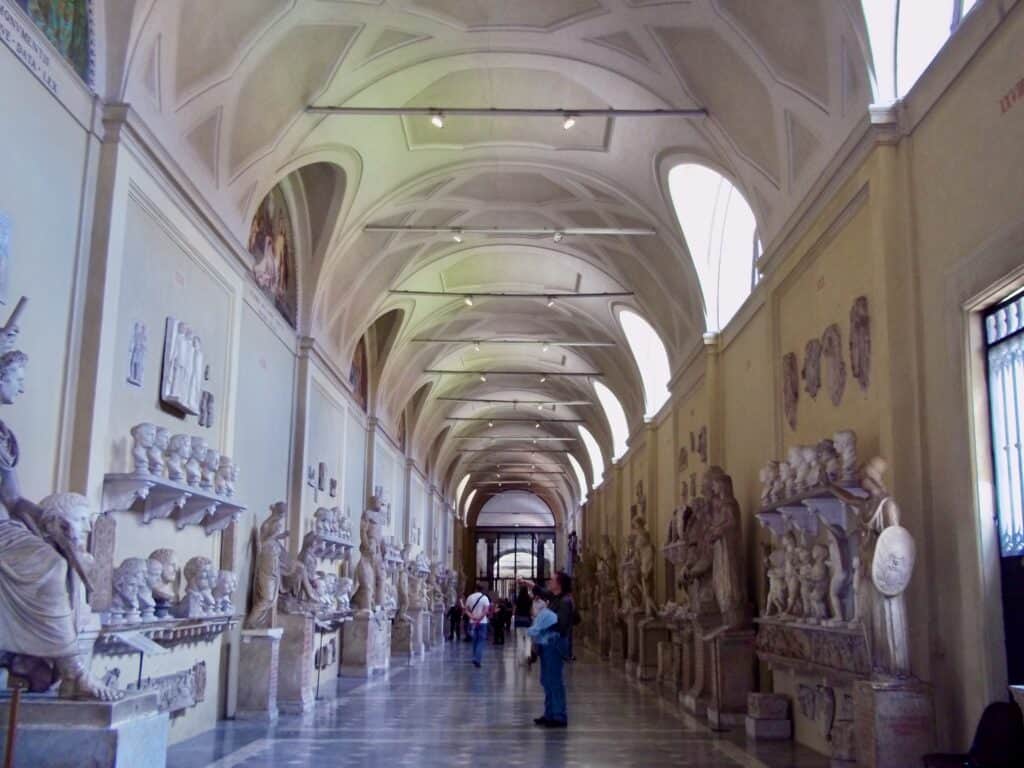
The collection was started by Pope Julius II in the early 16th century, and has since grown to include works by some of the most important artists in history, including Michelangelo, Raphael, and Leonardo da Vinci. The most famous work in the Vatican Museums is undoubtedly the Sistine Chapel, with its iconic ceiling painted by Michelangelo. There are also artifacts from Ancient Egypt, Sumeria, Damascus, and more.
Know that you will have to walk through many exhibits before you get to the chapel, so be prepared to walk many long hallways! It’s certain worth it once you get there though.
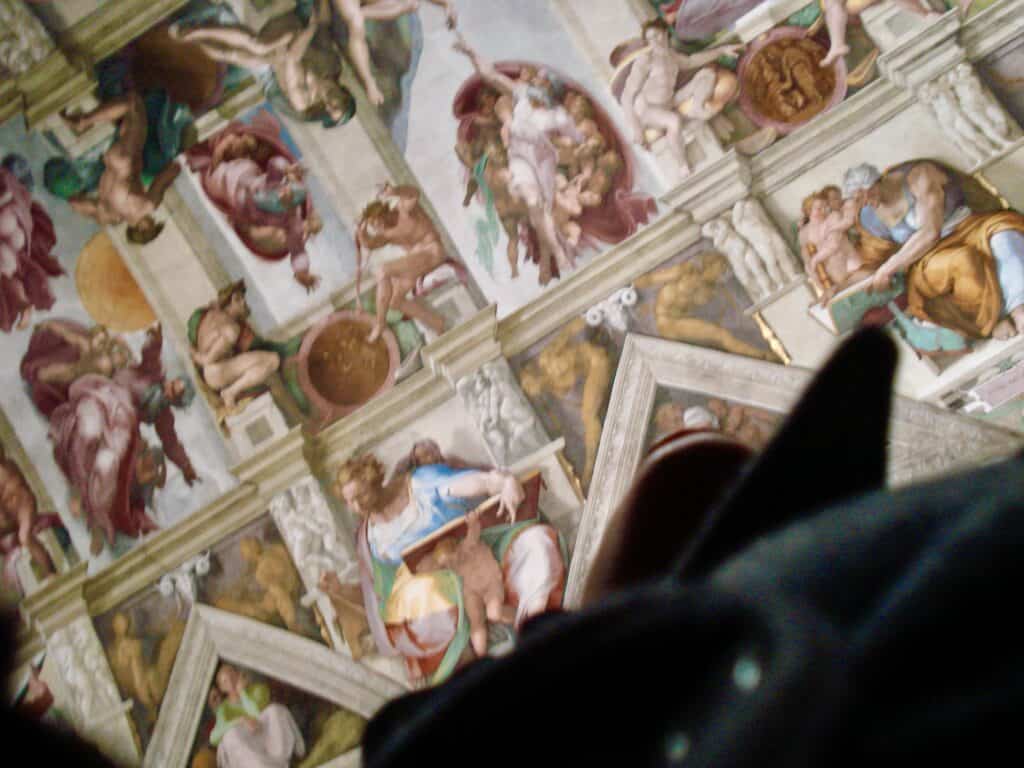
Pro Tip: To save yourself from waiting in the long lines outside of the museum, book a Skip-the-Line ticket.
To get here from via metro take the A line to the Ottaviano stop.
Afternoon
Next up is St. Peter’s Basilica, which is located behind the museums. St. Peter’s Basilica is the largest church in the world world. The basilica is a masterpiece of Renaissance and Baroque architecture, and is considered one of the most iconic landmarks of Rome. The basilica is named after St. Peter, one of the twelve apostles of Jesus Christ and the first bishop of Rome. According to tradition, St. Peter is buried beneath the high altar of the basilica. The basilica contains numerous works of art, including Michelangelo’s famous sculpture “La Pietà,” as well as stunning mosaics and frescoes. You can also climb to the top of the dome for breathtaking views of Vatican City and the surrounding area.
Outside of the basilica, you’ll see St. Peter’s Square, or Piazza San Pietro in Italian. This is a large open space located in front of St. Peter’s Basilica in Vatican City. The square was designed by Gian Lorenzo Bernini in the 17th century, and is one of the most famous and recognizable landmarks in Rome. The square is shaped like a giant ellipse, and is surrounded by colonnades on either side.
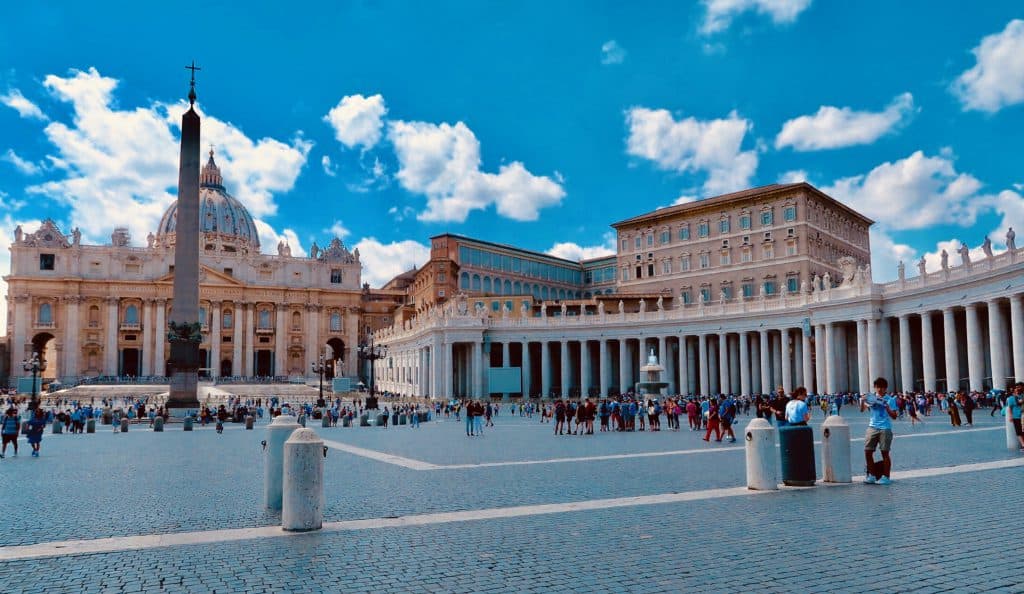
Like the Vatican Museums, it’s best to book a Skip-the-Line ticket to avoid the long lines you always find leading up to the entrance. It’s required that your knees and shoulders be covered for the visit, so make sure you dress appropriately!
Evening
For dinner, you should visit the charming Trastevere area of the city. This neighborhood has a rich and fascinating history that spans over two millennia. The area was first settled in ancient times, and was an important commercial and industrial center in the Roman Republic. Towards the end of the Roman Republic, the area became an important Jewish community. The oldest synagogue in the city can be found there (although it no longer serves as such). Trastevere stopped being a Jewish neighborhood in the 1500s, when Jews were forced to move to the Roman jewish ghetto. It was around this time that Trastevere became home to many of Rome’s artisans, including weavers, glassmakers, and blacksmiths. In the Renaissance, Trastevere became a center for the arts, with many artists and intellectuals making the area their home.
Throughout its history, Trastevere has been known for its vibrant and bohemian atmosphere, with many musicians, artists, and writers living and working in the neighborhood. In the 20th century, Trastevere became a center for political activism, with many left-wing groups and social movements based in the area. Today, Trastevere is one of the most popular neighborhoods in Rome, attracting visitors from all over the world. Despite its popularity, the area has managed to retain its authentic and lively character, with its narrow streets and colorful buildings providing a charming backdrop to the many restaurants, bars, and shops that line its streets.
There are many options for eating here, and my family and I ate at Tonarello. This is a highly rated restaurant, which offers delicious traditional Italian fare.
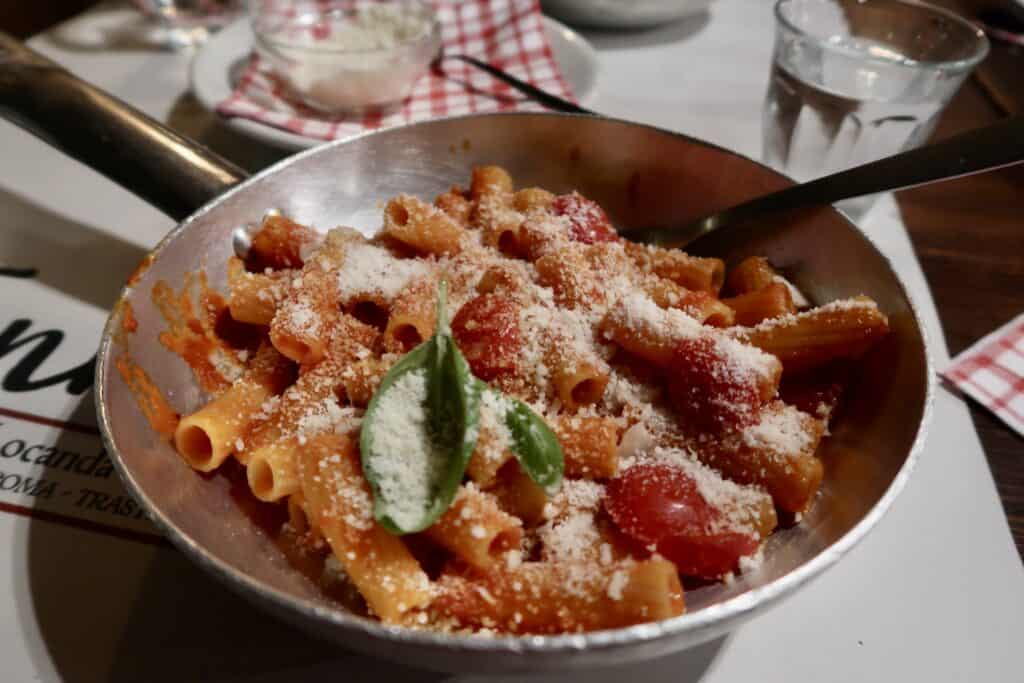
It is a pretty popular spot, so you many have to wait for a short while for a seat, but it is worth it. My favorite part of my meal was the tiramisu, which was almost a yogurt-like texture. It’s an interesting take on this dessert, but delightfully tasty.
Day 4 | Catacombs & Shopping
Morning
For your final day in Rome, start the day with a tour of the St. Callixtus Catacombs. The Catacomb of St. Callixtus is one of the most important catacombs in Rome and is considered to be the official cemetery of the Church of Rome. The catacomb contains the tombs of several early popes, including Pope Sixtus II and Pope Cornelius, as well as many martyrs and early Christian saints. The catacomb is divided into several areas, each with its own unique features and decorations. The Crypt of the Popes is one of the most important areas of the catacomb and contains the tombs of many early popes.
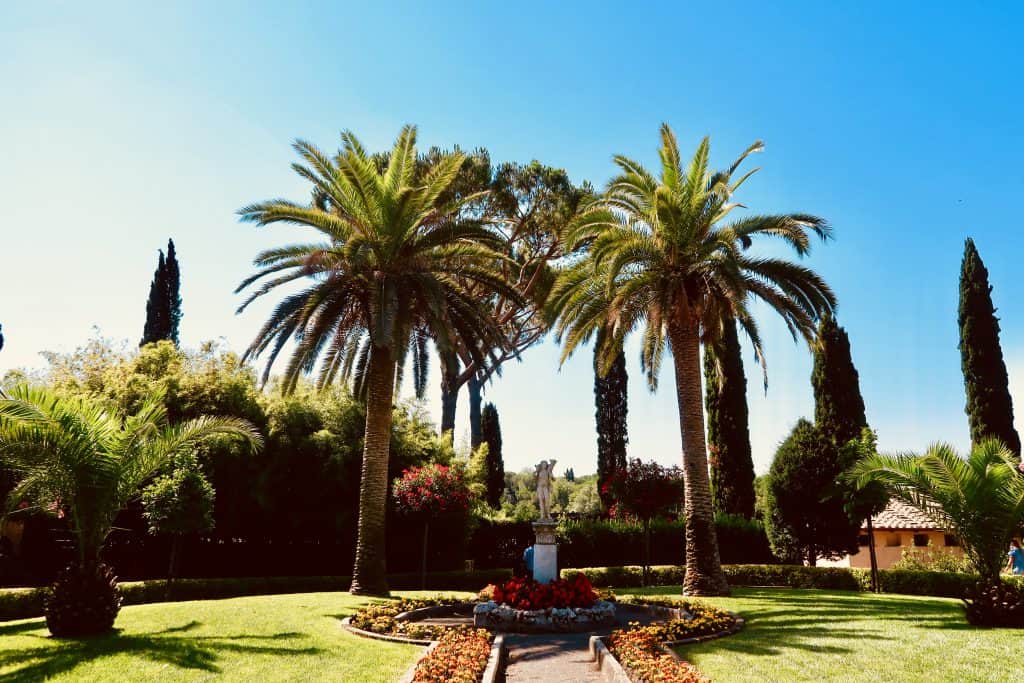
The Catacomb of St. Callixtus is also famous for its intricate frescoes and inscriptions, which provide insight into the beliefs and practices of early Christians. Visitors to the catacomb can explore the various galleries and chambers, and learn about the history of Christianity in Rome. If you don’t already know, the Catacombs are where the early Christians of Rome buried their dead. Inside them it is a bit cold and damp, but you can see frescoes and burial chambers that go several stories below the ground here. It’s quite impressive!
While out near the St. Callixtus catacombs, you can visit the Appian Way, a major highway during Ancient Roman times. The Appian Way, or Via Appia Antica in Italian, is one of the oldest and most important Roman roads. It was originally built in 312 BC to connect Rome to the southern regions of Italy, and later extended to the port city of Brindisi on the Adriatic Sea. The Appian Way played a vital role in the expansion of the Roman Empire, serving as a major transportation route for military troops and supplies.
The aqueducts are also nearby, and well worth a look if you can fit them into your schedule. I myself really did not fully appreciate the building genius of the aqueducts until I got a close look and saw how huge they are.
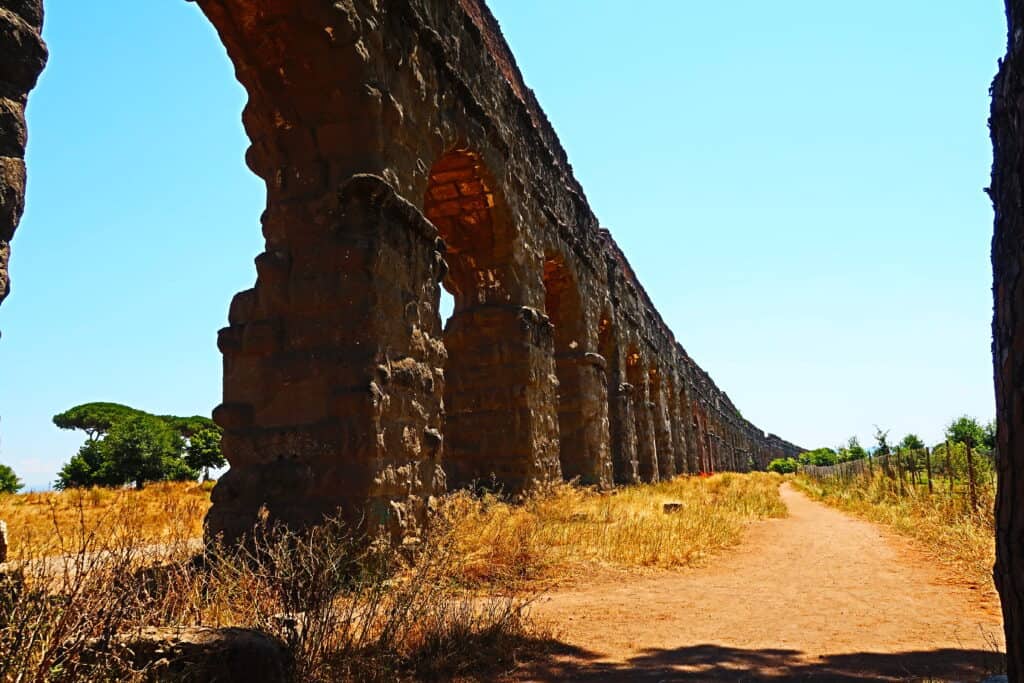
If you would like to have the visit to each of these sites mapped out for you, I recommend taking the Catacombs and the Appian Way Day Trip from Rome Tour, which includes transport to each location and a tour guide.You can’t take photos inside the catacombs, but the scenery above ground is beautiful! Did you know palm trees grow in Rome?
Afternoon / Evening
In the afternoon head back to Piazza de Poppolo, which can be accessed by the Flaminio metro station. You can walk through this piazza to get to Via Del Corso, which serves as Rome’s “High Street”. Here you’ll find shops of all types, and most major brands such as Zara and H&M. Perpendicular to Via Del Corso you’ll hit Via Condotti, which has more luxury brands, such as Gucci and Chanel. There are plenty of opportunities to find a good bite to eat in the streets you’ll cross as you make your way down Via Del Corso, so you will not go hungry!
As this is your last night in Rome, I also strongly suggest that you try some gelato from Della Palma. It is just the best!
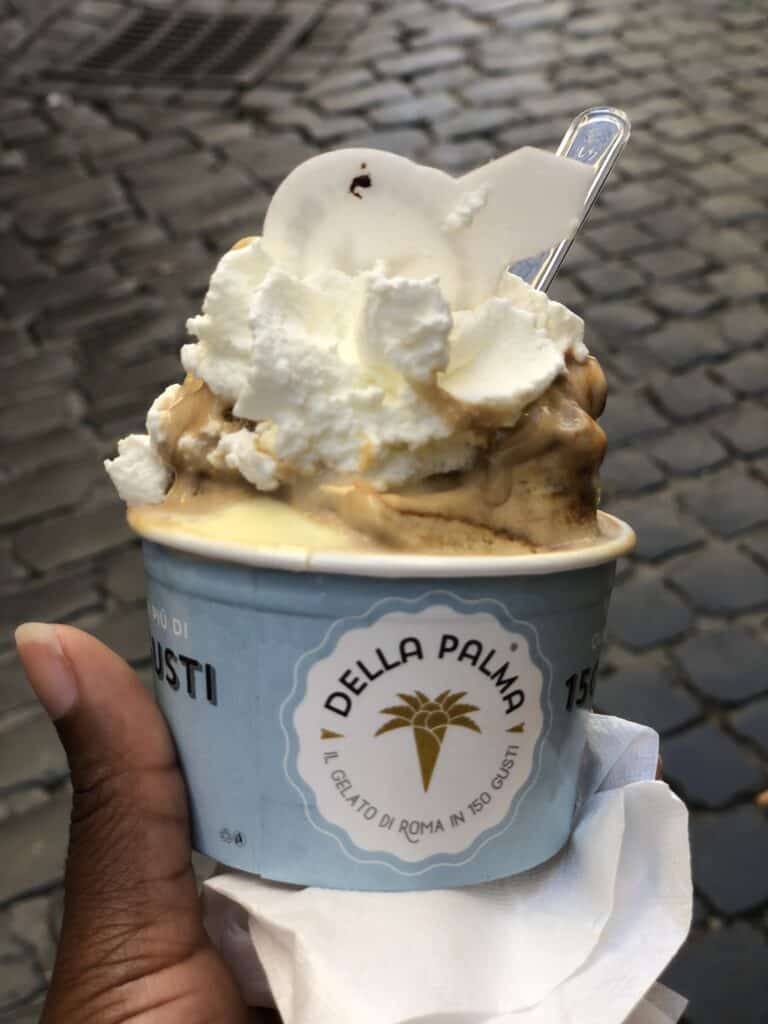
The Roma Pass
The Roma Pass is a tourist pass that offers visitors to Rome free or discounted access to many of the city’s top attractions, as well as free use of public transportation. The pass is available in two options: a 48-hour pass and a 72-hour pass. Both options include free entry to the first two museums or archaeological sites visited, as well as discounted rates for subsequent visits. The pass also provides unlimited access to the city’s public transportation system, including buses, trams, and the metro.
In addition to free and discounted entry to museums and sites, the Roma Pass also offers a range of other benefits, such as discounts at participating restaurants and shops, and free access to a number of cultural events and exhibitions. The pass can be purchased online, at participating museums and tourist offices, or at major transportation hubs such as the airport or train station.
I’ve used the Roma Pass every time I’ve visited Rome, and think that it is worth it, even if you just use it for transportation.
Click here to Book you Roma Pass Now!
Rome City Map
Here is a map of the key sites mentioned in this post:
- Spanish Steps
- Monumento a Vittorio Emanuele II
- Trevi Fountain
- Pantheon
- Trajan’s Baths
- Piazza Navona
- Colosseum
- Palatine Hill
- Circus Maximus
- Vatican Museum
- St. Peter’s Bascilica
- Trastevere
- St. Callixtus Catacombs
- Via Del Corso
What to Do in Rome if you Have More Time
There are so many things to do in Rome, so here are a few additional ides for the city, if you can fit it in:
- Castel Sant’Angelo: Also known as the Mausoleum of Hadrian, is a towering cylindrical fortress located on the banks of the Tiber River in Rome. Built in the 2nd century AD as a mausoleum for the Roman Emperor Hadrian and his family, the building was later converted into a military fortress and a papal residence. The fortress has played an important role in Roman history, serving as a refuge for popes during times of war and siege. It was connected to the Vatican via a secret underground passage, known as the Passetto di Borgo, which provided a safe escape route for popes in times of danger. Today, Castel Sant’Angelo is open to the public as a museum, showcasing the history of the building and its various uses over the centuries. Here, you can explore the castle’s many rooms and halls, including the Papal Apartments, the Chapel of St. Michael, and the terrace, which offers stunning views of the city of Rome.
- Piazza Venezia is a large square located at the foot of Capitoline Hill. The square is home to several notable landmarks, including the towering Monumento a Vittorio Emanuele II, the Palazzo Venezia, and the Trajan’s Column. The Monumento a Vittorio Emanuele II, also known as the Altare della Patria, is a massive white marble monument built in honor of the first king of a united Italy. The monument is hard to miss, with its imposing size and intricate details, including sculptures and reliefs depicting important moments in Italian history. The Palazzo Venezia, which stands at the northern end of the square, was once a papal residence and is now a museum housing an impressive collection of Renaissance art. The Trajan’s Column, located at the southern end of the square, is a towering monument erected in honor of the Roman Emperor Trajan.
- Villa Borghese: This villa was originally built in the early 17th century for the Borghese family and now serves as a popular tourist attraction. The museum features an extensive collection of art and sculptures, including works by renowned artists such as Bernini, Caravaggio, and Raphael. The sprawling park surrounding the villa covers an area of approximately 80 hectares, making it one of the largest public parks in Rome. The park is filled with stunning gardens, fountains, and walking paths, providing visitors with a tranquil oasis in the middle of the bustling city. In addition to the museum and gardens, Villa Borghese is also home to a number of other attractions, including a zoo, a cinema, and a lake where visitors can rent rowboats.
- Rome Street Food Tour: Rome is well known for is delicious food. Take some time to learn more about the food scene by taking a street food tour. You’ll try local pizza, pastries, seasonal produce, and more on this unique tour experience.
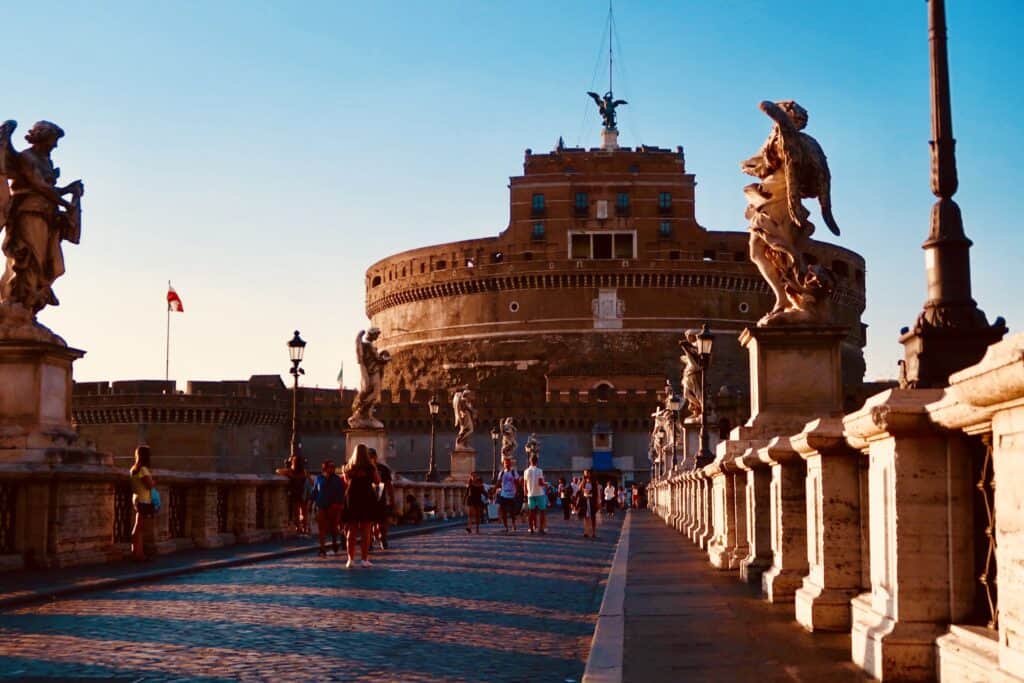
Getting to Rome
Rome is serviced by two major airports: Leonardo da Vinci-Fiumicino Airport and Rome-Ciampino International Airport.
- Fiumicino is the main international hub and is located about 45 minutes outside of the city. It is the 10th busiest airport in the EU and is the hub for ITA. If you are flying a major carrier, such as American Airlines or Alitalia, expect to fly from here.
- Ciampino is the smaller of the two airports, and only serves budget airlines. So if you are flying EasyJet or RyanAir, you will likely start your trip to Rome here.
If you are relying on public transport, you can reach both by train or bus from the Roma Termini railway station. Speaking of Termini, you can take a train from another Italian city (or European city) to this station, which is centrally located.
To book your transport into the city, consider using a site such as Kayak or Momondo to compare flight options. If traveling by train, check out trenitalia.com to book your ticket.
Getting Around Rome
Rome is a very walkable city, in fact given the fact that many of the streets are very narrow, it’s often your best option. If you need to travel quickly from two opposite ends of the city, the public transportation system in the city is quite effective.
Rome’s metro system is a convenient and affordable way to navigate the city. The system currently has three lines, with a fourth line currently under construction. The subway lines connect many of the city’s major tourist attractions, making it an ideal way to explore the city. The stations themselves are often adorned with beautiful artwork and murals, making the subway ride itself a unique cultural experience.
The subway system is also relatively easy to use, with ticket machines available in English and staff on hand to answer any questions. You can book tickets by the amount of time needed (e.g., 24-hr pass), which I recommend you do. You can use this same pass on the city bus as well.
Note that uber is available in the city as well, but expect to wait a little for your ride to come along, given the tiny streets.
Where to Stay in Rome
It’s pretty hard to find a bad area to stay within the old city walls, which is the prime location for hotels. If you don’t mind staying just outside the city walls, you can find lower prices near the San Giovanni or Re di Roma metro stops. Here are a few of my personal recommendations:
Apartment recommendation
Vacanze Romane Rooms
We stayed here on my most recent trip to Rome and loved it! The host is so nice and there is plenty of space for larger traveling parties, given that there are two bedrooms inside. The location is great as well, as it is located near the city center and very close to the metro. The apartment has AC, a fully equipped kitchen, and comes with a continental breakfast as well.
Boutique Hotel recommendation
Nikis Collection Navona
This boutique hotel is located right by the Pantheon. It features AC, bathrooms with bidets, and a shared lounge area on the rooftop. The rooms are decorated in a modern style and are kept very clean. And the views from the rooftop are spectacular.
Boutique Hotel recommendation
Ricciardelli Luxury Studios – Piazza di Spagna
This boutique hotel is located steps away from the Spanish Steps. It features more classically-themed rooms, but they are all beautifully decorated. There is also a buffet breakfast provided daily, and guest have noted how great the hospitality is here too.
Daily Considerations for Rome
The official language of Rome is Italian. The city is quite international, so English is spoken pretty widely. In my experience, you may need a little Italian in the lest touristy areas of the city. For example, I’ve had to work my way through Italian conversation in some out of the way restaurants in the past. I do recommend that you take the time to learn at least a little Italian before you arrive. This little bit of effort goes a long way. Check out my post on the Essential Italian Phrases for Travel for more information.
Currency Situation in Rome
Like most places in Europe, Italy uses the euro. At the time that this article was posted, the exchange rate was ‚ €1.00 = $1.11. This means that prices are a bit higher in general in Rome, but thankfully this has not fluctuated to greatly in recent years. Click here for the latest exchange rates.
When to Visit Rome
I recommend traveling in the cooler months, if you don’t mind the weather. The cool thing about Rome is that it has pretty mild winters (~50º F in December). You can even find palm trees growing there! During this time there are far fewer crowds, which will make your time there overall much more enjoyable.
Frequently Asked Questions on Rome
Four days in Rome can be enough to see many of the major attractions, but it might feel rushed if you want to explore the city in depth. Planning your itinerary carefully will allow you to visit key sites. Longer stays would allow for a more relaxed and immersive experience.
The Colosseum, one of Rome’s most iconic landmarks, can be found in “the Eternal City” in Europe. It is a symbol of ancient Roman engineering and architecture and stands as a testament to the grandeur of the Roman Empire.
Rome is a walkable city with many attractions located close to each other, but it can be challenging due to its cobblestone streets and occasional heavy traffic. Walking tours are popular, and many travelers enjoy exploring the city on foot. Public transportation or taxis may be needed for some farther distances.
The best time of year to visit Rome is during the spring (April to June) or fall (September to October) when the weather is pleasant and the crowds are less overwhelming. Summers can be hot and crowded, and winters are cooler and may have some rain.
Not everything is closed in Rome on Sundays, but many smaller shops and restaurants may be shut. Most tourist attractions, including major landmarks, remain open, and some museums even offer free admission on the first Sunday of the month. Grocery stores and shopping centers might have reduced hours or be closed.

Final Thoughts | 4-Day Rome Itinerary
That warps this 4-day Rome Itinerary! Although you could easily spend more time in the city, you can certainly visit all the top sites over four days in the city. Rome is a magical place, and the way that history is embedded in everything is one of the main reasons why I just keep going back. If you’ve been to Rome before, share your favorite memories in the comment box below! If you are thinking about heading to Rome, don’t hesitate to reach out with any questions.
Related Posts on Italy:
European Travel Guides:
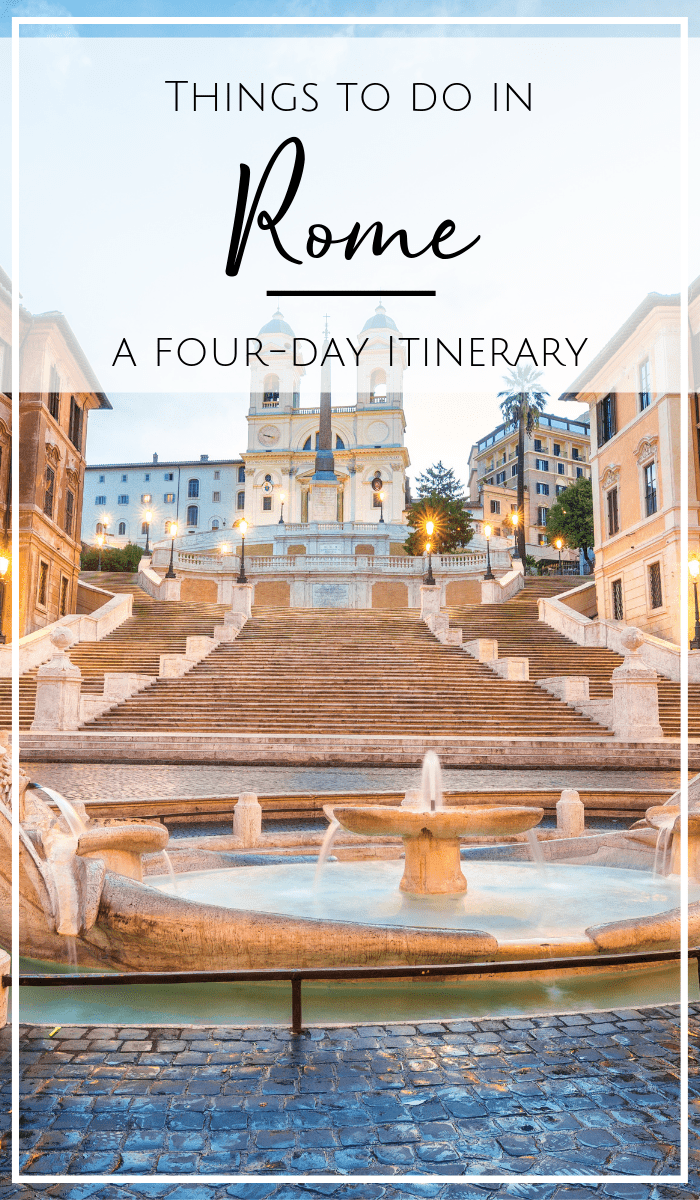

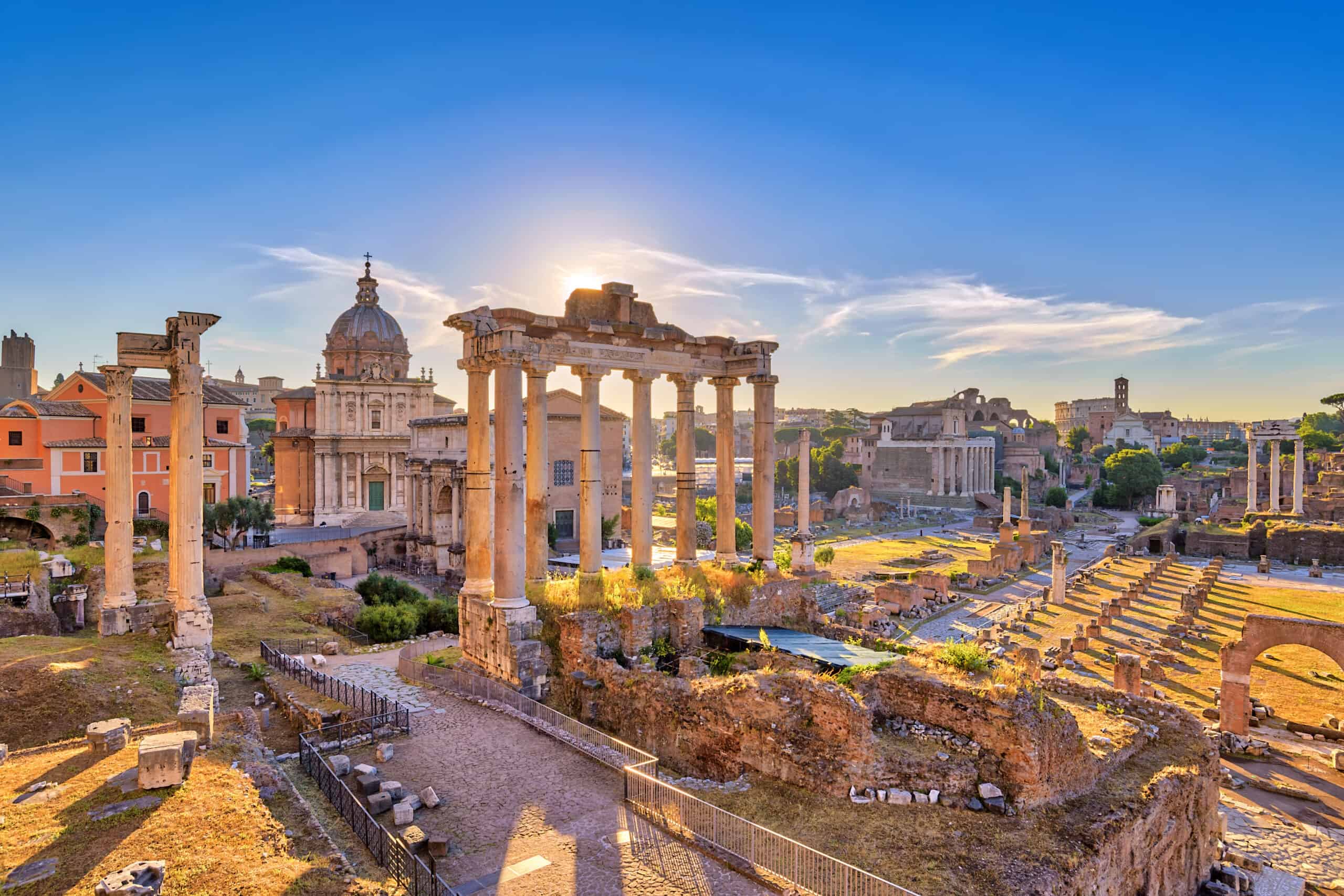
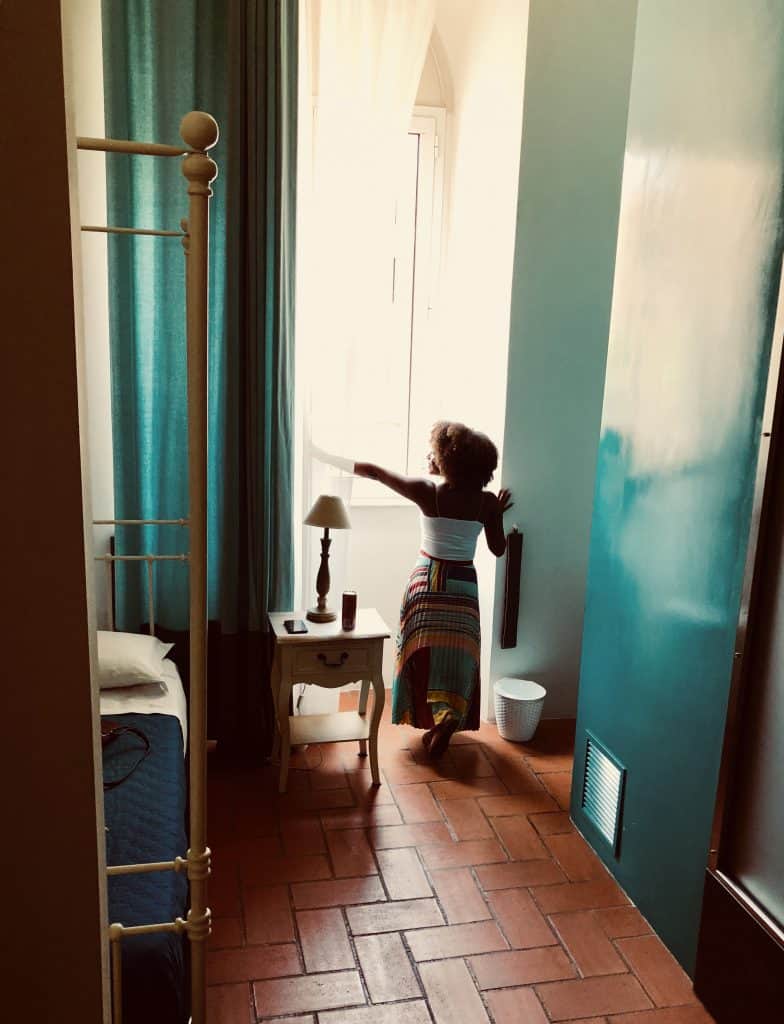
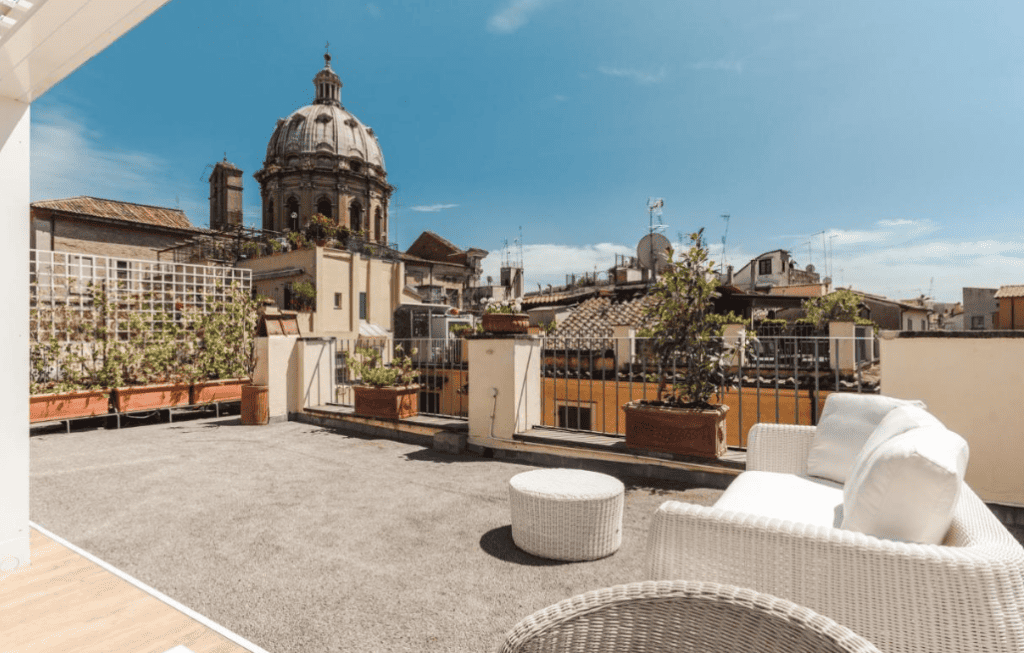
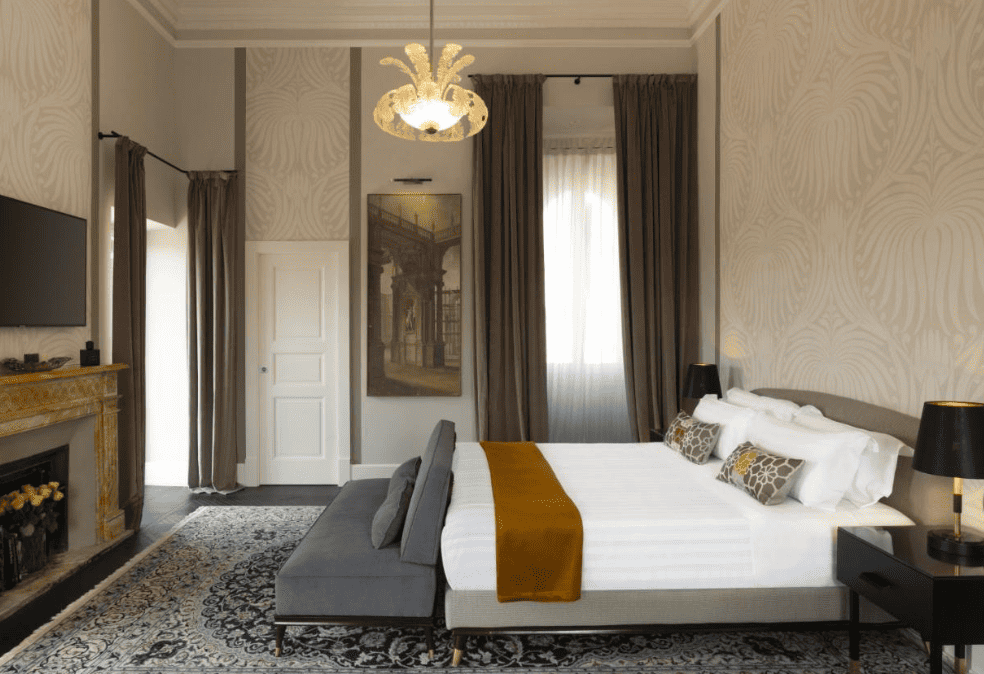
Thank you for bringing me to Rome:), What an informative inspiring post to read. Thumbs up!
Hi Gillian – Glad you found the post inspiring! 🙂
Thanks for the great tour! I’m going to Rome in a few months and had no idea where to start with my planning…. this has got me very excited!
Oh that’s great! Let me know if you have any questions as you start planning!
Wow, great post. Very informed about what to do in Rome. I’ve never been there, and never had a particular interest in doing so, but after reading your post, I think my mind is changed. Thanks for the tour!
That’s awesome! Glad that I’ve peaked your interest in heading to Rome! 🙂
I really had no interest at all in Rome… Till I read your post. It really is a stunning place. Your pics are just breathtaking. I love all the detailed information you have here and your recommendations will certainly come in handy when planning my Rome adventure.
Thank you
Glad I could inspire your travel ideas a bit, Patty! Hope you are able to make a trip there soon.
I have never been to Rome. Reading your guide I see that there is a lot to do there. After reading your guide I wish to see The Colosseum, The Trevi Fountain, and the Vatican. I’m not very familiar with the Airbnb you mentioned. Could you elaborate a little more on it?
Yes, there really is so much to do there! This post really only begins to touch on it. Yes, I can certainly share more information on Airbnb with you! Please check out My Honest Airbnb Review (linked below), where I lay out the pros and cons of staying in one, and a general overview of the company.
https://travelwandergrow.com/my-honest-airbnb-review
Hi there, I appreciate your four day itineraries as I’m planning a trip backpacking through Europe this year. I recently heard of Get Your Guide and noticed that all the tours you recommended are through that website.
Did you participate in the exact tours you recommend? There are so many similar options available on Get Your Guide (as well as Trip Advsior) so it’s hard to know which ones are the best value and official tours. Is Get Your Guide a company that manages all tours listed – or is it a website and each tour is a different company? I’m a little confused as I compare tours and read reviews on Get Your Guide and Trip Advisor.
Last question: Is it the same cost to purchase skip-the-line tickets directly from museums?
Hi Michelle – The only tour I did not do myself is the one for St. Peter’s Bascilica (due to limited time). I use Get Your Guide often and love it. It is a company that connects you to other local tour companies that are usually top tier. And the costs are usually about the same as they would be at the museum (and you skip the waiting lines there too). For more information on Get Your Guide, check out this post.